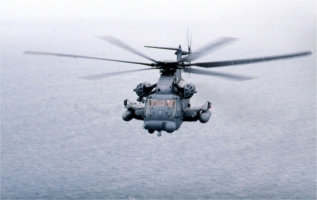|
|
|
The MH-53J Pave Low is a modified version of the HH-53 Super Jolly Green Giant helicopter used extensively during the Vietnam War for special operations and rescue of combat personnel. During past space programs, the HH-53 was on duty at the launch site as the primary astronaut recovery vehicle. Under the Air Force's Pave Low IIIE program, nine MH-53H's and 32 HH-53s were modified for night and adverse weather operations and designated MH-53J's. Their modifications included forward-looking infrared, inertial global positioning system, Doppler navigation systems, a terrain-following and terrain-avoidance radar, an on-board computer and integrated avionics to enable precise navigation to and from target areas.
MH-53J's were used in a variety of missions during Desert Storm. Pave Lows were among the first aircraft into Iraq when they led Army AH-64 Apaches to destroy Iraqi early warning radars and opened a hole in enemy air defenses for the opening air armada. In addition to infiltration, exfiltration and resupply of special forces teams throughout Iraq and Kuwait, Pave Lows provided search and rescue coverage for coalition air forces in Iraq, Saudi Arabia, Kuwait, Turkey and the Persian Gulf.
An MH-53J made the first successful combat recovery of a downed pilot in Desert Storm. Following the war, MH-53J's were deployed to Northern Iraq to support Operation Provide Comfort, assisting displaced Kurds. Pave Lows were also used extensively during Operation Just Cause in Panama.



